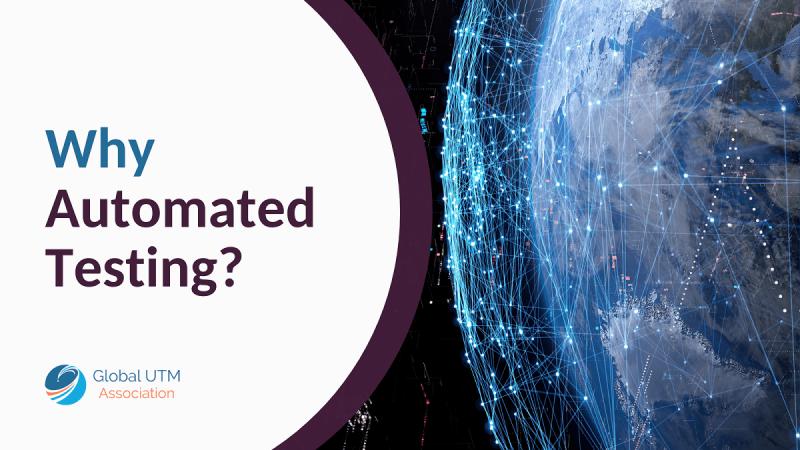The Global UTM Association (GUTMA) Standards Harmonization Working Group has released a new publication entitled Why Automated Testing?
The document explores the significance of automated testing and providing insights into its potential impact on the UAS and UTM industries.
Compared to the traditional approach of air traffic service (ATS) interacting with pilots or other airports, U-space contains additional digital interactions between USSP-Operators, USSP-USSP, USSP-ATS and CISP-USSP. Consequently, the regulators will need to develop and manage a new e-identification service connected to the registration database, manage digital tokens and develop systems to automate testing and audit of U-space systems.
Automation is the key tenet in the development, and maintenance of UTM systems under the responsibility of UTM service providers. The certification procedure can no longer be based on a paperwork process. The amounts of data are simply too big to assess; the connectivity requirements too complex to evaluate manually. Also, the overview and control of function under responsibility of the CAAs need to be automated – at least for the certification and overview of dynamic processes – the connectivity and services provision.
One way to use automated testing is to facilitate the confirmation that the software under examination meets the functional, safety, or performance criteria established by the regulations. Automated test environments can be run to test interfaces, IO and connectivity at no additional costs and will be faster than manual testing. Its usage can help reduce the verification and validation efforts on the part of service providers and certification authorities.
The investment in automated testing is justified because:
- UTM technology is cloud-based, services-driven, based on open software and API standards and capable of generating vast amounts of data;
- UTM services are made up of contributions from multiple digital services and connected systems;
- Digital and connected technologies lend themselves to frequent automated health and compliance monitoring;
- Market assessments predict a 10-fold increase in the number of UTM service providers necessary to cater for the significant market for drone services – providers not only coming from the national market, but also coming from non-national markets through the mutual recognition process;
- Regulators will be able to quickly investigate and assess errors or incidents as well as pause or withdraw permissions digitally.
Automated testing is common in aviation being used primarily to verify specification requirements through standardization of test scripts, traceability tools, emulators and simulators. Software tools used to automate verification processes typically are designed to verify functional requirements, code coverage analysis, resource usage and checking compliance with standards. Such tools are used in the aviation industry for developing safety-critical software together with compliance information and evidence.
As part of the certification process, UTM businesses have to provide compliance evidence to show that the use of UTM software will not result in a hazard or that the failure of UTM service will not cause an accident. Following aviation industry standards on software assurance will require organizations to demonstrate the adoption and use of a structured approach and best practices laid out in technical standards such as ED-153 Guidance for Software Assurance or DO-278A or ED-109A Software integrity assurance for CNS-ATM systems. The core argument of these documents is discipline and traceability throughout the lifecycle of the software and thorough testing at key stages.
According to the publication, the UTM industry can benefit hugely from incorporating automated testing into the verification and validation workflows to demonstrate conformance to technical standards, compliance to regulations, and test for robustness and resilience.
Access the publication here
For more information visit:




